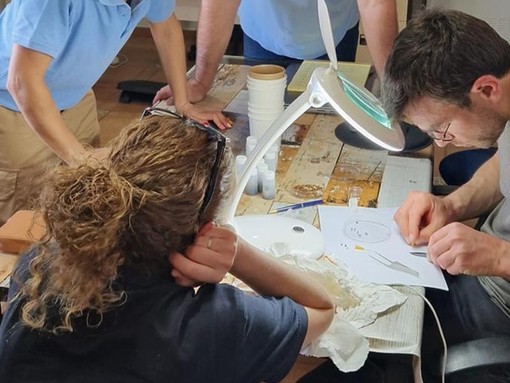
Our research
Stable flies, known for inflicting painful bites on equines, cause substantial economic losses worldwide by hindering animal feeding and potentially transmitting diseases.
To address this, we have participated in pioneering scientific research led by entomologists, testing an environmentally friendly approach to Integrated Pest Management (IPM) at our Doña Rosa sanctuary in Badajoz.
This strategy combines hygiene and manure management practices, animal protection, the release of natural and native enemies that target immature stages of the fly (predatory mites and two species of parasitoid wasps), and a specialized trapping system for adult flies.
The study highlights the use of this holistic strategy toward a sustainable and environmentally friendly method for stable fly control. This approach aims to mitigate damage to equines and reduce dependence on traditional insecticides, thus contributing to equine well-being and ecosystem health.
Larval development occurs in a variety of substrates, including decaying plant material and manure, while adult flies pose a threat by feeding on blood from both animals and humans.
Conventional chemical control methods, predominantly dependent on insecticides, not only carry environmental risks but also face challenges due to the development of resistance among stable fly populations. To address this problem, an integrated pest management (IPM) strategy for stable fly control has been proposed.
This approach has involved a combination of practices, including:
1. Hygiene and manure management
All stables were cleaned and disinfected every 15 days, and the manure was removed to a remote location using several fly traps. This manure was collected periodically. The stables were disinfected by removing the bedding using an antibacterial, antiviral, and antifungal product containing 6.9% didecyl dimethyl ammonium chloride (SANITAS®) or another product containing primarily 4.0% biphenyl-2-ol and 0.90% chlorocresol (Zotal®). Feeders were also disinfected at least twice a month.
2. Welfare assessment and protective measures in donkeys
A veterinary team assessed the welfare status of those animals showing severe skin lesions (a total of 14 donkeys) caused by S. calcitrans bites from May 2021 to November 2023. Selected animals were inspected monthly to assess the affected area (head, chest, and number of limbs) and the severity of the skin lesions.
In addition, multiple protective measures were employed to prevent direct contact and bites, such as protective blankets, fly boots, fly nets, and mesh gaiters for these 14 donkeys and others if necessary (this did not affect the interpretation of the results), as well as topical repellents, which can significantly minimize the risk of Stomoxys fly bites and ensure the well-being of the equines.
Since the flies tend to attack the lower parts of donkeys’ legs, cotton leggings or other fly-repellent materials can be used as a protective measure. At all times, the donkeys’ well-being prevailed over the study guidelines.
Regarding chemical protection, deltamethrin pour-on (BUTOX, pour-on emulsion®) was applied twice a year, in early spring and during the summer. During peak abundances, repellents (Tri-Tec 14™ and Pody® care) were sprayed on the donkeys’ bodies to protect them. These products contained ingredients such as pyrethrin, permethrin, and tetramethrin.
3. Release of natural native enemies that attack the immature stages of Stomoxys calcitrans
Three different species of biological control agents were used to manage S. calcitrans. These included the predatory mite M. robustulus and two parasitoid wasps: Spalangia cameroni Perkins and Muscidifurax raptor Girault and Sanders (Hymenoptera, Pteromalidae) under the trademarks Biomite® and Biowasp®. The biological parasites were released on the farm as part of protocols to control immature stages of the stable fly (eggs and larvae).
From 15 June 2022 to 1 September 2023, a total of 14 on-farm releases were carried out (6 in 2022 and 8 in 2023), presumably involving an estimated 2,200,000 predatory mites (M. robustulus) and 1,316,000 parasitoid wasps (S. cameroni and M. raptor, with 50% of each species) during the stable fly season.
Biological control agents were manually distributed evenly across different barns. These predators live in waste and manure areas and feed on S. calcitrans larvae and eggs, thus helping to reduce their population.
4. Specialized trap system for adult specimens
Twenty-one Stomoxycc® traps were installed throughout the sanctuary as a key component of this IPM strategy.
In the full article, we present the application and results of the IPM strategy used and provide information on its use as a sustainable and environmentally friendly option for controlling stable fly populations.
Share this page
Tags
- News

